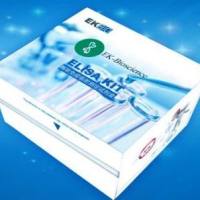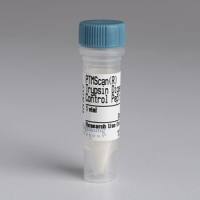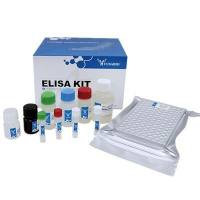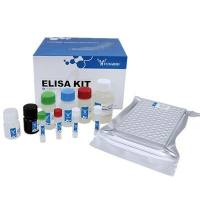Characterization of Histaminergic Receptors
互联网
- Abstract
- Table of Contents
- Materials
- Figures
- Literature Cited
Abstract
This unit describes radioligand binding protocols for histamine H1 , H2 , H3 , and H4 receptors. Because these receptors demonstrate low amino acid sequence homology and divergent pharmacological characteristics, assay conditions vary for each. These protocols can be employed in high?throughput screening programs aimed at identifying selective agonists and antagonists for these sites.
Keywords: histaminergic receptors; H1 histamine receptors; H2 histamine receptors; H3 histamine receptors; H4 histamine receptors; radioligand binding assays; antihistamines
Table of Contents
- Strategic Planning
- Basic Protocol 1: Measurement of [3H]Mepyramine Binding to Cloned Human H1 Receptors
- Alternate Protocol 1: Measurement of [3H]mepyramine Binding to Native H1 Receptors in Tissue Membrane Homogenates
- Basic Protocol 2: Measurement Of [3H]tiotidine Binding to Cloned Human H2 Receptors
- Alternate Protocol 2: Measurement of [125I]aminopotentidine Binding to Native H2 Receptors in Tissue Membrane Homogenates
- Basic Protocol 3: Measurement of [3H]N‐α‐Methyl Histamine Binding to Cloned Human H3 Receptors in Membranes
- Alternate Protocol 3: Measurement of [3H]N‐α‐Methyl Histamine Binding to Native H3 Receptors
- Basic Protocol 4: Measurement of [3H]histamine Binding to Cloned Human H4 Receptors in Membranes
- Support Protocol 1: Data Analysis
- Reagents and Solutions
- Commentary
- Literature Cited
- Figures
- Tables
Materials
Basic Protocol 1: Measurement of [3H]Mepyramine Binding to Cloned Human H1 Receptors
Materials
Alternate Protocol 1: Measurement of [3H]mepyramine Binding to Native H1 Receptors in Tissue Membrane Homogenates
Basic Protocol 2: Measurement Of [3H]tiotidine Binding to Cloned Human H2 Receptors
Materials
Alternate Protocol 2: Measurement of [125I]aminopotentidine Binding to Native H2 Receptors in Tissue Membrane Homogenates
Basic Protocol 3: Measurement of [3H]N‐α‐Methyl Histamine Binding to Cloned Human H3 Receptors in Membranes
Materials
Alternate Protocol 3: Measurement of [3H]N‐α‐Methyl Histamine Binding to Native H3 Receptors
Basic Protocol 4: Measurement of [3H]histamine Binding to Cloned Human H4 Receptors in Membranes
Materials
|
Figures
-
Figure 1.19.1 Microtiter plate 96‐well format scheme for saturation binding assay providing 12 concentrations of radioligand covering a 100‐fold concentration range. Concentration 1 (0.09 nM in this example) is pipetted into row A, wells 1 through 6, to which have been added appropriate volumes of assay buffer for total binding wells and an appropriate concentration of a blocking agent for nonspecific binding (NSB) wells. This concentration of radioligand can also be pipetted into wells 1 and 2 of row G to serve as filter blanks, if desired. Similar steps are taken for each increasing concentration of radioligand (indicated by increased shading of the background) over a 100‐fold concentration range. The dilution strategy shown is suitable for [3 H]mepyramine binding to H1 histaminergic receptors. There is a slight bias toward more concentrations of radioligand at the low end of the concentration range, because these are often more useful in defining the dissociation constant of the radioligand in subsequent data analyses. The signal‐to‐noise ratio is greater, and there is a more dynamic change in radioligand binding at these lower concentrations; these changes become less dynamic as saturation of receptor sites is approached. To explore additional concentrations of a well characterized radioligand with low filter blanks, rows G and H can be used for up to four more concentrations of radioligand. This dilution scheme was used in the assay illustrated in Figure View Image -
Figure 1.19.2 Microtiter plate 96‐well format scheme for competition binding assay, providing 11 concentrations for each of 4 test compounds. Compound 1 is pipetted into rows A and B, in concentrations ranging from 100 nM to 0.1 nM (final concentrations, allowing for dilution by addition of other reagents). Note that at each end of the concentration‐response curve, 10‐fold changes in the concentrations are used. This allows a broader coverage of concentration ranges, and it also places additional data points on those parts of a concentration‐response curve where greater dynamic changes in radioligand binding are anticipated. A compound expected or known to be more potent (Compound 2) is pipetted similarly into rows C and D, although 10‐fold lower concentrations are used than with compound 1. Rows E and F are filled with compound 3, which is expected to be very potent, such that concentrations in the picomolar range are used. Compound 4 is pipetted similarly to compound 1. Wells labeled “total” contain a corresponding volume of assay buffer or diluent for test compounds, and wells labeled “NSB” contain the same volume of the appropriate concentration of the compound used to define nonspecific binding. View Image -
Figure 1.19.3 Saturation binding results for H1 receptors expressed in HEK‐293 cells, based on the assay illustrated in Figure . Human H1 receptors were incubated with different concentrations of [3 H]mepyramine as described in . Nonspecific binding (triangles) was subtracted from total binding (circles) to yield specific binding (squares). As can be seen, most of the binding is specific. Transforming the specific binding data according to the procedure of Scatchard (inset) provides an estimate of the affinity of the radioligand ( K d = 0.85 nM, derived from the inverse of the slope of the line) and the receptor density ( B max = 2700 fmol/mg protein, derived from the x ‐intercept). View Image -
Figure 1.19.4 Saturation binding results for human H2 receptors expressed in HEK‐293 cells, based on an assay strategy similar to that illustrated in Figure . Human H2 receptors were incubated with different concentrations of [3 H]tiotidine as described in . Nonspecific binding (triangles) was subtracted from total binding (circles) to yield specific binding (squares). As can be seen, most of the binding is specific binding. Transforming the specific binding data according to the procedure of Scatchard (inset) provides an estimate of the affinity of the radioligand ( K d = 6.6 nM) and the receptor density ( B max = 23 pmol/mg protein). View Image -
Figure 1.19.5 Saturation binding results for human H3 receptors expressed in HEK‐293 cell membrane homogenates, based on the assay illustrated in Figure . Human H3 receptors were incubated with different concentrations of [3 H] N ‐α‐methyl histamine (NAMH) as described in . Nonspecific binding (triangles) was subtracted from total binding (circles) to yield specific binding (squares). As can be seen, most of the binding is specific binding. Transforming the specific binding data according to the procedure of Scatchard (inset) provides an estimate of the affinity of the radioligand ( K d = 0.50 nM) and the receptor density ( B max = 1220 fmol/mg protein). View Image
Videos
Literature Cited
| Alves‐Rodrigues, A., Leurs, R., Wu, T.S., Prell, G.D., Foged, C., and Timmerman, H. 1996. [3H]Thioperamide as a radioligand for the histamine H3 receptor in rat cerebral cortex. Br. J. Pharmacol. 118:2045‐2052. | |
| Arrang, J.M., Garbarg, M., and Schwartz, J.C. 1983. Autoinhibition of brain histamine release by a novel class (H3) of histamine receptor. Nature 302:832‐837. | |
| Bakker, R.A., Timmerman, H., and Leurs, R. Histamine receptors: Specific ligands, receptor biochemistry, and signal transduction. 2002. Clin. Allergy Immunol. 17:27‐64. | |
| Barger, G., and Dale, J.J. 1910. Chemical structure and sympathomimetic action of amines. J. Physiol. 41:19‐59. | |
| Black, J.W., Duncan, W.A.M., Durant, G.J., Ganellin, C.R., and Parsons, M.E. 1972. Definition and antagonism of histamine H2 receptors. Nature 236:385‐390. | |
| Brown, J.D., O'Shaughnessy, C.T., Kilpatrick, G.J., Scopes, D.I.C., Beswick, P., Clitherow, J.W., and Barnes, J.C. 1996. Characterization of the specific binding of the histamine H3 receptor antagonist radioligand [3H]GR168320. Eur. J. Pharmacol. 311:305‐310. | |
| Cheng, Y.C. and Prusoff, W.H. 1973. Relationship between the inhibition constant (KI) and the concentration of inhibitor which causes 50 per cent inhibition (I50) of an enzymatic reaction. Biochem. Pharmacol. 22:3099‐3108. | |
| Coge, F., Guenin, S.P., Audinot, V., Renouard‐Try, A., Beauverger, P., Macia, C., Ouvry, C., Nagel, N., Rique, H., Boutin, J.A., and Galizzi, J.P. 2001. Genomic organization and characterization of splice variants of the human histamine H3 receptor. Biochem. J. 355:279‐288. | |
| De Backer, M.D., Gommeren, W., Moereels, H., Nobels, G., Van Gompel, P., Leysen, J.E., and Luyten, W.H. 1993. Genomic cloning, heterologous expression and pharmacological characterization of a human histamine H1 receptor. Biochem. Biophys. Res. Commun. 197:1601‐1608. | |
| de Esch, I.J., Thurmond, R.L., Jongejan, A., and Leurs, R. 2005. The histamine H4 receptor as a new therapeutic target for inflammation. Trends Pharmacol. Sci. 26:462‐469. | |
| Drutel, G., Peitsaro, N., Karlstedt, K., Wieland, K., Smit, M.J., Timmerman, H., Panula, P., and Leurs, R. 2001. Identification of rat H3 receptor isoforms with different brain expression and signaling properties. Mol. Pharmacol. 59:1‐8. | |
| Du Buske, L.M. 1996. Clinical comparison of histamine H1‐receptor antagonist drugs. J. Allergy Clin. Immunol. 98:S307‐S318. | |
| Esbenshade, T.A., Fox, G.B., and Cowart, M.D. 2006. Histamine H3 receptor antagonists: Preclinical promise for treating obesity and cognitive disorders. Mol. Interv. 6:77‐88. | |
| Fourneau, E. and Bovet, D. 1933. Recherches sur l'action sympathicolytique d'un nouveau dérivé du dioxane. Arch. Int. Pharmacodyn. 46:179‐191. | |
| Gantz, I., Munzert, G., Tashiro, T., Schaffer, M., Wang, L., DelValle, J., and Yamada, T. 1991. Molecular cloning of the human histamine H2 receptor. Biochem. Biophys. Res. Commun. 178:1386‐1392. | |
| Hancock, A.A., Esbenshade, T.A., Krueger, K.M., and Yao, B.B. 2003. Genetic and pharmacological aspects of histamine H3 receptor heterogeneity. J. Life Sci. 73:3043‐3072. | |
| Harper, E.A., Shankley, N.P., and Black, J.W. 1997. Characterisation of the binding of the histamine H3‐receptor antagonist, [3H]clobenpropit, to sites in guinea‐pig cerebral cortex membranes. Br. J. Pharmacol. 122:432P. | |
| Hill, S.J., Ganellin, C.R., Timmerman, H., Schwartz, J.C., Shankley, N.P., Young, J.M., Schunack, W., Levi, R., and Haas, H.L. 1997. International Union of Pharmacology. XIII. Classification of histamine receptors. Pharmacol. Rev. 49:253‐278. | |
| Jansen, F.P., Rademaker, B., Bast, A., and Timmerman, H. 1992. The first radiolabeled histamine H3 receptor antagonist, [125I]iodophenpropit: Saturable and reversible binding to rat cortex membranes. Eur. J. Pharmacol. 217:203‐205. | |
| Leurs, R., Smit, M.J., and Timmerman, H. 1995. Molecular pharmacological aspects of histamine receptors. Pharmacol. Ther. 66:413‐463. | |
| Leurs, R., Bakker, R.A., Timmerman, H., and de Esch, I.J. 2005. The histamine H3 receptor: from gene cloning to H3 receptor drugs. Nat. Rev. Drug Discov. 4:107‐120. | |
| Ligneau, X., Garbarg, M., Vizuete, L., Diaz, J., Purand, K., Stark, H., Schunack, W., and Schwartz, J‐C. 1994. [125I]Iodoproxyfan, a new antagonist to label and visualize cerebral histamine H2 receptors. J. Pharmacol. Exp. Ther. 271:452‐459. | |
| Liu, C., Ma, X., Jiang, X., Wilson, S.J., Hofstra, C.L., Blevitt, J., Pyati, J., Li, X., Chai, W., Carruthers, N., and Lovenberg, T.W. 2001a. Cloning and pharmacological characterization of a fourth histamine receptor (H4) expressed in bone marrow. Mol. Pharmacol. 59:420‐426. | |
| Liu, C., Wilson, S.J., Kuei, C., and Lovenberg, T.W. 2001b. Comparison of human, mouse, rat, and guinea pig histamine H4 receptors reveals substantial pharmacological species variation. J. Pharmacol. Exp. Ther. 299:121‐130. | |
| Lovenberg, T.W., Roland, B.L., Wilson, S.J., Jiang, X., Pyati, J., Huvar, A., Jackson, M.R., and Erlander, M.G. 1999. Cloning and functional expression of the human histamine H3 receptor. Mol. Pharmacol. 55:1101‐1107. | |
| Lovenberg, T.W., Pyati, J., Chang, H., Wilson, S.J., and Erlander, M.G. 2000. Cloning of rat H3 receptor reveals distinct species pharmacological profiles. J. Pharmacol. Exp. Therap. 293:771‐778. | |
| Oda, T., Morikawa, N., Saito, Y., Masuho, Y., and Matsumoto, S.‐I. 2000. Molecular cloning and characterization of a novel type of histamine receptor preferentially expressed in leukocytes. J. Biol. Chem. 275:36781‐36786. | |
| Thurmond, R.L., Desai, P.J., Dunford, P.J., Fung‐Leung, W.‐P., Hofstra, C.L., Jiang, W., Nguyen, S., Riley, J.P., Sun, S., Williams, K.N., Edwards, J.P., and Karlsson, L. 2004. A potent and selective histamine H4 receptor sntagonist with snti‐Inflammatory properties. J. Pharmacol. Exp. Ther. 309:404‐413. | |
| West, R.E. Jr., Zwieg, A., Shih, N.Y., Siegel, M.I., Egan, R.W., and Clark, M.A. 1990. Identification of H3 histamine receptor subtypes. Mol. Pharmacol. 38:610‐613. | |
| West, R.E. Jr., Wu, R‐L., Billah, M.M., Egan, R.W., and Anthes, J.C. 1999. The profiles of human and primate [3H]Nα‐methyl histamine binding differ from that of rodents. Eur. J. Pharmacol. 177:233‐239. | |
| Witte, D.G., Yao, B.B., Miller, T.R., Carr, T.L., Cassar, S., Sharma, R., Faghih, R., Surber, B.W., Esbenshade, T.A., Hancock, A.A., and Krueger, K.M. 2006. Detection of multiple H3 receptor affinity states utilizing [3H]A‐349821, a novel, selective, non‐imidazole histamine H3 receptor inverse agonist radioligand. Br. J. Pharmacol. 148:657‐670. | |
| Yao, B.B., Witte, D.G., Miller, T.R., Carr, T.L., Kang, C.H., Cassar, S., Faghih, R., Bennani, Y.L., Surber, B.W., Hancock, A.A., and Esbenshade, T.A. 2006. Use of an inverse agonist radioligand [3H]A‐317920 reveals distinct pharmacological profiles of the rat histamine H3 receptor. Neuropharmacology. 50:468‐478. | |
| Key References | |
| De Backer, et al., 1993. See above. | |
| Cloning of the human H1 receptor gene and initial pharmacological characterization. | |
| Gantz et al., 1991. See above. | |
| Cloning of the human H2 receptor gene and initial pharmacological characterization. | |
| Gajtkowski, G.A., Norris, D.B., Rising, T.J., and Wood, T.P. 1983. Specific binding of [3H]tiotidine to histamine H2 receptors in guinea‐pig cerebral cortex. Nature 304:65‐67. | |
| First successful radioligand described for H2 receptors after a number of false starts. | |
| Hancock et al., 2003. See above. | |
| Comprehensive review of histamine H3 receptor isoform heterogeneity. | |
| Lovenberg et al., 1999. See above. | |
| Cloning of the human H3 receptor gene and initial pharmacological characterization. | |
| Oda et al., 2000. See above. | |
| Cloning of the human H4 receptor gene and initial pharmacological characterization. | |
| West et al., 1999. See above. | |
| Characterization of homogenate radioligand binding in rat, human and non‐human primate brain indicating pharmacological differences may exist. |









